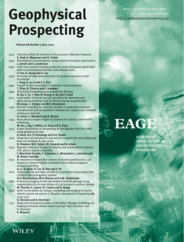
Full text loading...
 , Tobias Müller1,2, Gang Fang3, Haibo Zhao4
, Tobias Müller1,2, Gang Fang3, Haibo Zhao4
Tight oil siltstones are rocks with complex structure at pore scale and are characterized by low porosity and low permeability at macroscale. The production of tight oil siltstone reservoirs can be increased by hydraulic fracturing. For optimal fracking results, it is desirable to map the ability to fracture based on seismic data prior to fracturing. Brittleness is currently thought to be a key parameter for evaluating the ability to fracture. To link seismic information to the brittleness distribution, a rock physics model is required. Currently, there exists no commonly accepted rock physics model for tight oil siltstones. Based on the observed correlation between porosity and mineral composition and known microstructure of tight oil siltstone in Daqing oilfield of Songliao basin, we develop a rock physics model by combining the Voigt–Reuss–Hill average, self‐consistent approximation and differential effective medium theory. This rock physics model allows us to explore the dependence of the brittleness on porosity, mineral composition, microcrack volume fraction and microcrack aspect ratio. The results show that, as quartz content increases and feldspar content decreases, Young's modulus tends to increase and Poisson ratio decreases. This is taken as a signature of higher brittleness. Using well log data and seismic inversion results, we demonstrate the versatility of the rock physics template for brittleness prediction.

Article metrics loading...

Full text loading...
References


Data & Media loading...

